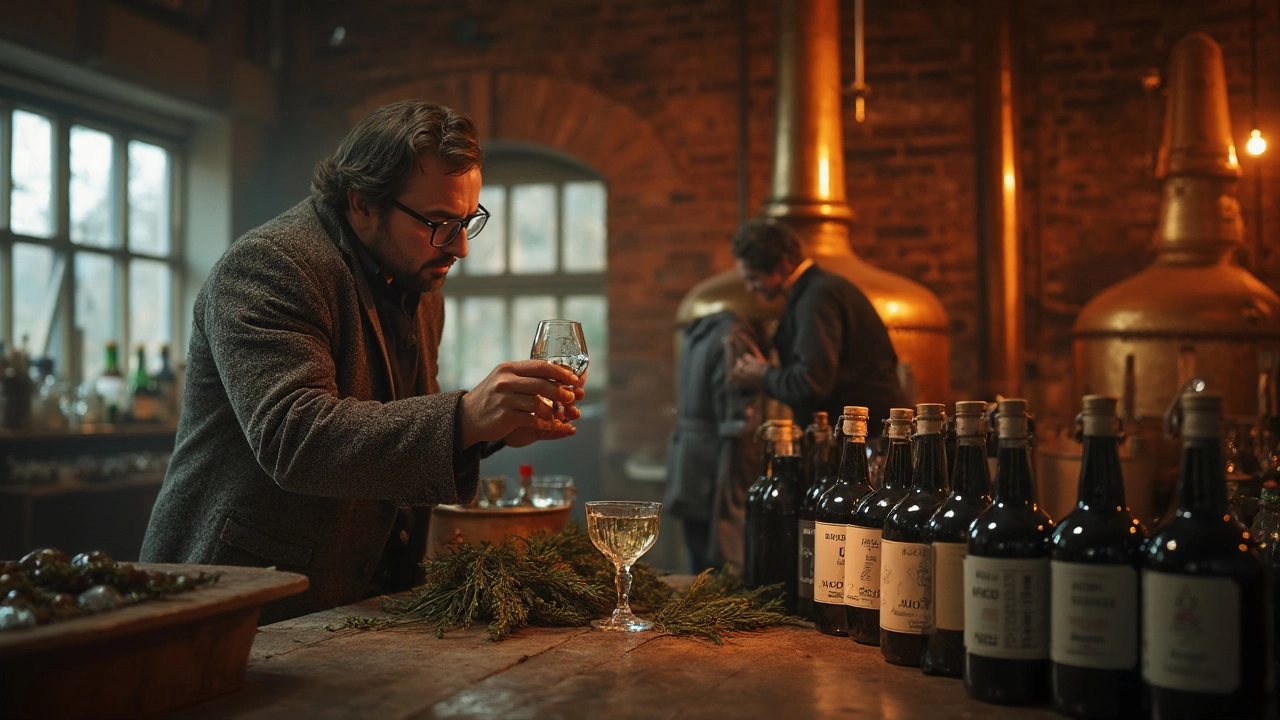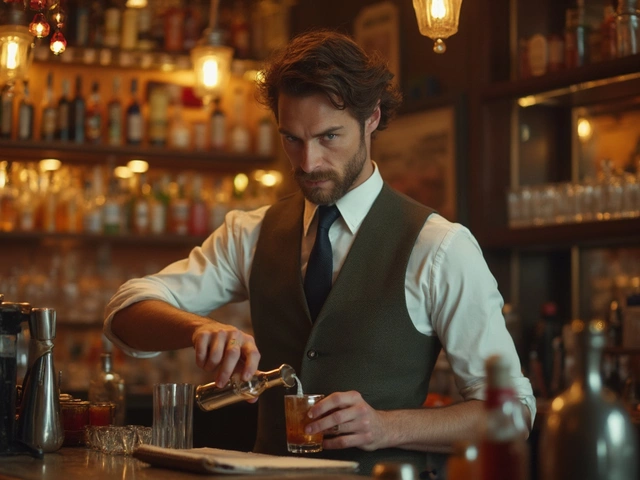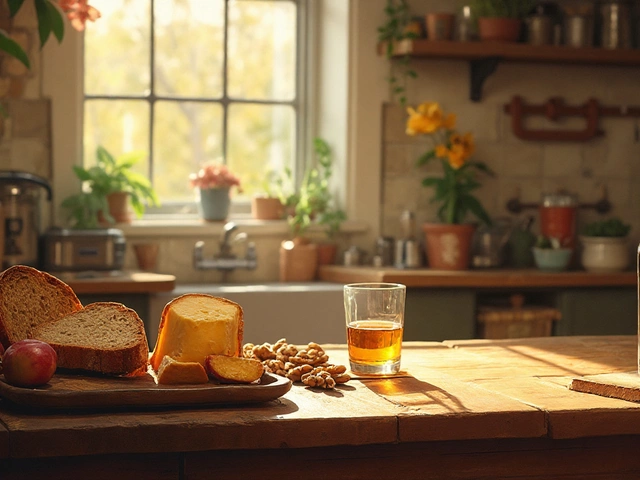Ever picked up a bottle labeled 'Navy Strength' or 'Overproof' and wondered how strong gin can really get? Turns out, there’s a wild world of gin out there where bottles can pack a serious punch—way above your usual gin and tonic pour. If you’re planning a distillery tour or just trying to impress your friends, knowing what to look for in a strong gin can make the whole experience a lot more interesting (and let’s be honest, sometimes a bit of a shock to the system).
Gin strength isn’t just marketing talk. It comes down to Alcohol By Volume (ABV), and the jump from your standard 40% gin to bottles hitting over 57% isn’t for the faint-hearted. Some distilleries even boast gins flirting with the legal limit—there’s one British brand that reaches a fiery 82.5% ABV, which is about as intense as gin gets.
But it’s not just about who can make the strongest rocket fuel. There are actually reasons for these powerful gins, and different distilleries take pride in showing visitors how they create such bold spirits. Most offer a behind-the-scenes look at their processes, with knowledgeable staff explaining why some gins are made at higher proofs (spoiler: there’s history, tradition, and science mixed in there).
- How Do We Measure Gin Strength?
- Strongest Gins on the Market
- Gin Distillery Tours: Spotting the High-Proof Bottles
- Tips for Enjoying Strong Gin Safely
How Do We Measure Gin Strength?
When people talk about strong gin, most of the time, they’re really asking about how much alcohol is in the bottle. The main number you’ll see is ABV, which stands for Alcohol By Volume. Basically, ABV tells you what percent of the liquid inside is pure alcohol. Standard gin you find in the store often sits at around 40-45% ABV. Once you go past the 57% mark, you’re getting into heavy-duty territory, where the spirit is really powerful and can catch you off guard if you’re not used to it.
Sometimes you’ll also hear people (especially in the US) talk about “proof.” It’s a simple formula: proof is twice the ABV. For example, a 50% ABV gin is 100 proof. But in Europe, and basically everywhere outside the US, ABV is what matters most on the label.
To give you a clear view of how some types of gin stack up in strength, check this table:
| Type of Gin | Typical ABV (%) |
|---|---|
| Standard London Dry | 40-47 |
| Navy Strength | 57-58 |
| Overproof Gin | 60+ |
| World's Strongest Gin | Up to 82.5 |
Why do some gins go above 57% ABV? Most of it comes down to tradition. The term “Navy Strength” started back when the British Royal Navy had rules about how strong their spirits had to be—if the gin spilled on gunpowder and it still lit, that was ‘proof’ it was strong enough. Distillers still use these strict standards for some special gins. When you’re checking bottles at a distillery (or the shop for that matter), look at the ABV for a quick answer about strength. If you want the strongest gin, you’re looking for bottles far above the usual range—you might even spot tiny warning labels because some of these gins can be seriously intense to drink straight.
Strongest Gins on the Market
If you’re looking for the absolute top in strong gin, a few brands immediately jump out for pushing the limits. You can actually find bottles on shelves today that are much stronger than anything you’d typically pour in a gin and tonic.
So, what qualifies as "strongest gin"? Most regular gins come in at 40% ABV (Alcohol By Volume), but some brands crank things up to Navy Strength (57% ABV and up). Then there are the true outliers—the gins that hit 70% ABV or even higher. Not all distilleries make these super high-proof bottles, but the ones that do tend to brag about it, and for good reason—they stand out.
- Anno Extreme 95 Gin (UK) – 95% ABV: This is the world’s strongest commercially available gin. It comes with a warning for a reason. You’re not supposed to drink it straight, but it’s a wild bottle to see in person.
- Strane Uncut London Dry Gin (Sweden) – 82.5% ABV: This one doesn’t mess around. It broke records when it came out and is made in super small batches.
- Bruichladdich X4+1 Quadrupled Whisky Gin (Scotland) – 76% ABV: Originally known for whisky, this Scottish distillery experimented with gin at a very high proof.
- Purity Old Tom (Sweden) – 57.1% ABV: Right at Navy Strength, this one is easier to find and actually made for sipping or mixing.
To give you an easy way to compare some of the strongest gin brands, here’s a quick table with the stats:
| Brand | ABV (%) | Country | Notes |
|---|---|---|---|
| Anno Extreme 95 Gin | 95 | UK | Strongest on the commercial market |
| Strane Uncut London Dry | 82.5 | Sweden | Record-breaker, small batches |
| Bruichladdich X4+1 Gin | 76 | Scotland | Known for whisky, rare gin release |
| Purity Old Tom | 57.1 | Sweden | Navy Strength, more common |
When touring distilleries, check if they produce their own high-ABV bottlings—most are proud to show off if they do, and sometimes you can even try limited editions that won’t ever make it to a regular shop. Just remember to sample carefully—a little goes a long way with these heavy hitters.

Gin Distillery Tours: Spotting the High-Proof Bottles
So, you're at a distillery tour, and you want to get hands-on with the strongest gin they offer. It's not always obvious, since shelf labels and fancy bottle designs can be distracting. The magic phrase to look for? Anything stamped with 'Navy Strength,' 'Overproof,' or a number that creeps above 50% ABV. Regular gin sticks around 40-43%, but the high-proof bottles push way past that.
When touring places like Plymouth Gin, Four Pillars in Australia, or Blackwoods in Scotland, always ask to see the bottles in their 'Overproof' section. Plymouth’s Navy Strength Gin sits at 57% ABV, and Four Pillars puts out a classic Overproof at around 58.8%. Carterhead Still’s Sipsmith V.J.O.P. hovers at 57.7%. These are gins meant to pack a punch, not just look good on the tasting shelf. Some distilleries like Anno Spirits in Kent, UK, even broke records—Anno Extreme 95 Gin tested at a wild 95% ABV for pure shock value (although it's rarely sold for regular consumption).
Here's a quick comparison of some big-name high-proof gins you'll often find during distillery tours:
| Gin Name | Distillery | ABV (%) | Country |
|---|---|---|---|
| Plymouth Navy Strength | Plymouth Gin | 57 | UK |
| Four Pillars Navy Strength | Four Pillars | 58.8 | Australia |
| Sipsmith V.J.O.P. | Sipsmith Distillery | 57.7 | UK |
| Anno Extreme 95 Gin | Anno Distillers | 95 | UK |
Be sure to ask the staff about their strongest pour if you're not sure—these folks know their gin. Some distilleries label their strongest gin more quietly, so don’t just trust the bottle design. Scan for the ABV number. Gins over 57% ABV are rare in the wild, but they're usually available to try right at the distillery (sometimes with a safety chat before you sip).
If you’re curious about why strong gins exist, ask your tour guide about the old Royal Navy tradition. Gins above 57% ABV were strong enough to ignite gunpowder—this wasn’t just a fun party fact; it was a quality test out at sea. Even today, strongest gin fans love the tradition and the bold flavors that come with it.
Tip: Don’t rush through high-proof tastings. Small sips and water break up the heat. Grab some tasting notes at each stop—you’ll spot a big difference in flavor and punch compared to regular gin.
Tips for Enjoying Strong Gin Safely
High-proof gin isn’t just another bottle at the bar—it’s in a league of its own. If you’re used to the classic 40% ABV gin, jumping to a Navy Strength (57% ABV) or something even higher can hit you fast. To keep things safe and actually enjoy the flavors, you’ve got to change your usual approach.
- Start Slow: Sip, don’t slam. High-proof gin carries the same amount of alcohol as a shot of whiskey or even some vodkas, so you’ll feel the effect way sooner.
- Mix It Up: For cocktails, use the usual recipe but expect a stronger kick. Many bartenders suggest smaller pours or extra mixer. Adding tonic or soda doesn’t just mellow the burn—it actually helps you taste more of the botanicals.
- Hydrate: Strong gin dries you out. Drink a glass of water between drinks and take it easy if you’re hopping between distilleries.
- Eat First: Having food in your stomach can reduce how quickly the alcohol hits you. Grab some snacks or a meal before your gin-tasting adventure.
- Ask the Experts: On a distillery tour, don’t be shy about asking staff for their tips on tasting—every distillery has its own methods, and many provide water drops or palate cleansers during high-proof tastings.
If you’re curious just how much stronger strong gin can be, check out these numbers:
| Gin Name | ABV (%) | Typical Serving Caution |
|---|---|---|
| Regular London Dry Gin | 40% | Standard pour |
| Navy Strength Gin | 57% | Recommended smaller pour |
| Anno Extreme 95 Gin | 95% | Highly diluted, never neat |
Don’t forget—gins over 70% are rare, but a few exist for cocktails and class demos, not for straight-up sipping. Always check the label and trust your gut if something feels like too much. Your taste buds and your morning-after self will thank you.
Want to get the most from the strongest gin? Treat it with respect, learn from the pros, and enjoy every drop without needing to recover for a week.


